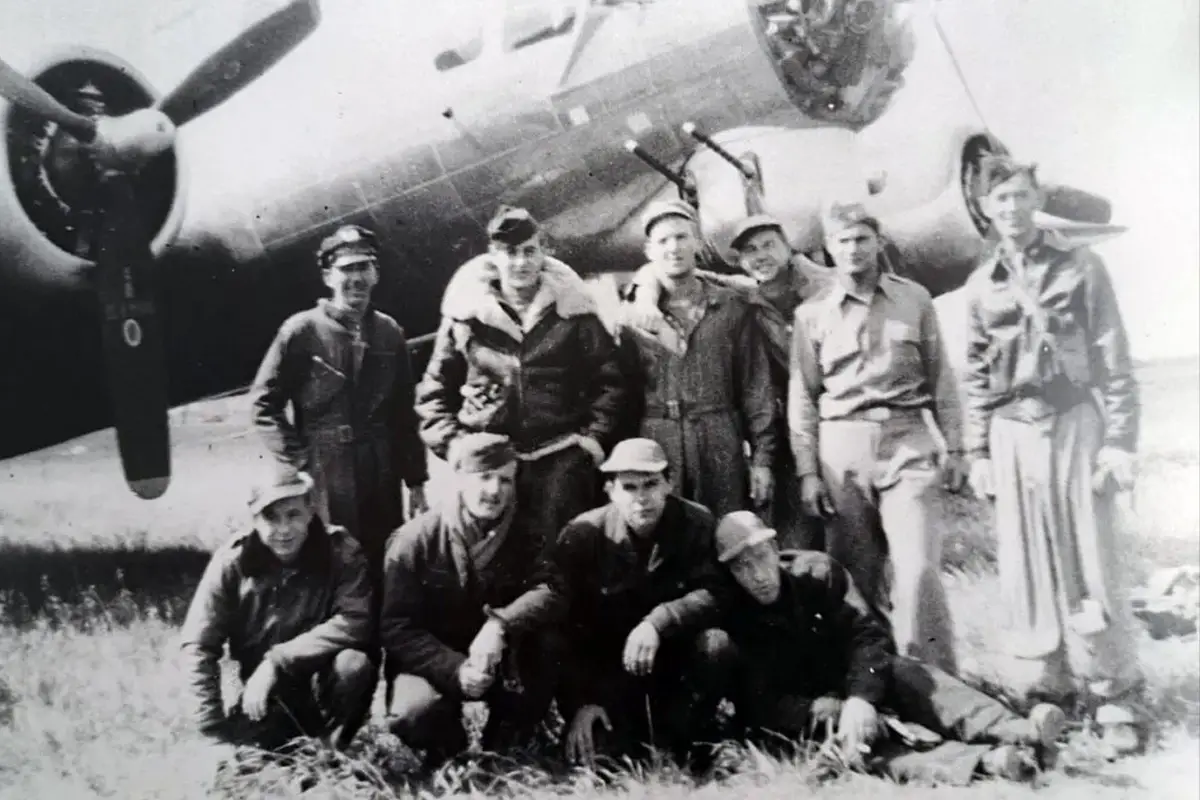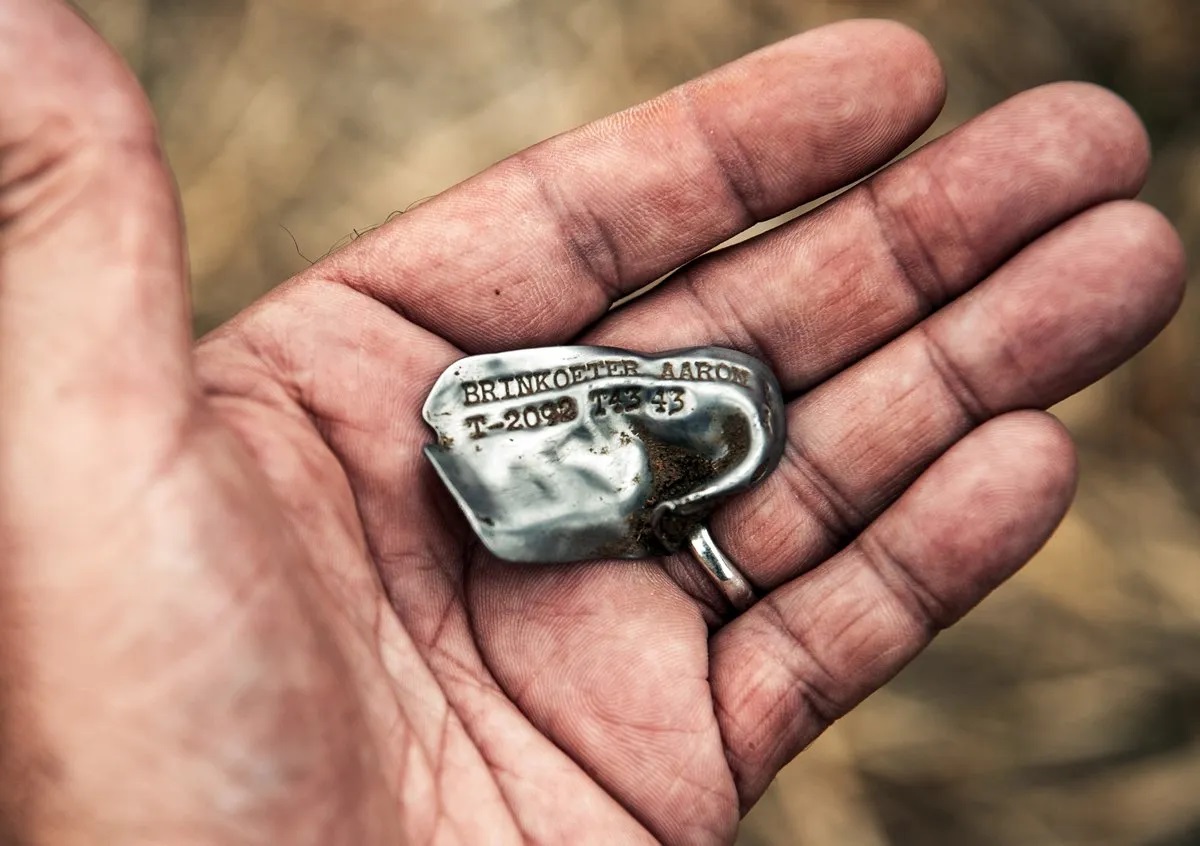Archaeologists excavating the crash site of the B-17 “Little Boy Blue” have recovered a dog tag belonging to USAAF Co-Pilot Aaron Brinkoeter.
During WWII, the United States Army Air Force played a critical role in conducting strategic bombing raids in the European Theatre of Operations. Among the aircraft used was the B-17 Flying Fortress, a four-engined heavy bomber known for its long range and firepower.
In the English county of Suffolk, 32 airfields hosted American squadrons, including the B-17 “Little Boy Blue”, crewed by Aaron Brinkoeter, Hal Hagerty, James Bennett, John McCluskey, Leo Ramos, Walter Malaniak, William Klemm, Ronald Grey, Norris Thomas, and Amos Force.
On the 19th July 1944, “Little Boy Blue” collided mid-air with another aircraft on a bombing route to Schweinfurt, and crashed just outside Thurston, near Bury St Edmunds.
Tragically, one crewman fell from the fuselage without his parachute, while four others were recovered from the wreckage. The explosion on impact left Pilot Walter Malaniak (age 26), Co-Pilot Aaron Brinkoeter (age 24), and Radio Operator Ronald Grey (age 27) unaccounted for, denying their families closure and the opportunity for formal funerals.

As part of a project commissioned by the US Department of Defense’s DPAA department – Cotswold Archaeology, in collaboration with Operation Nightingale, serving US military personnel, Cranfield University’s CRICC team, and the Suffolk Archaeology Field Group, conducted an investigation of the crash site aimed at finding and repatriating the remains of the three MIA crew members.
“Employing systematic geophysical surveys, fieldwalking, test-pitting, and metal detecting, the team meticulously mapped the debris field to locate aircraft wreckage, personal effects, and any potential remains,” said Cotswold Archaeology.
On the 12th September 2023, the birthday of Co-Pilot Aaron Brinkoeter, a metal detector survey recovered Aaron’s missing dog tag, inscribed: BRINKOETER AARON T-2092 T43 43. “This moving discovery provided a tangible connection to the lost airman that will stay with us all for some time to come,” added Cotswold Archaeology.
A memorial service, led by the Bishop of Dunwich, Rt Rev Dr. Mike Harrison, was held at the crash site to honour all ten crewmen and unveil a permanent memorial. In attendance were 30 family members of the aircrew who were presented with B-17 pins, crafted from the wreckage of the aircraft.
The recovery is the subject of an upcoming feature episode of Time Team.
Header Image Credit : Cotswold Archaeology
Sources : Cotswold Archaeology







